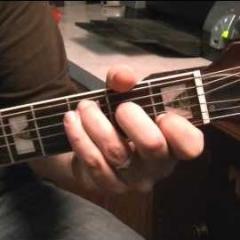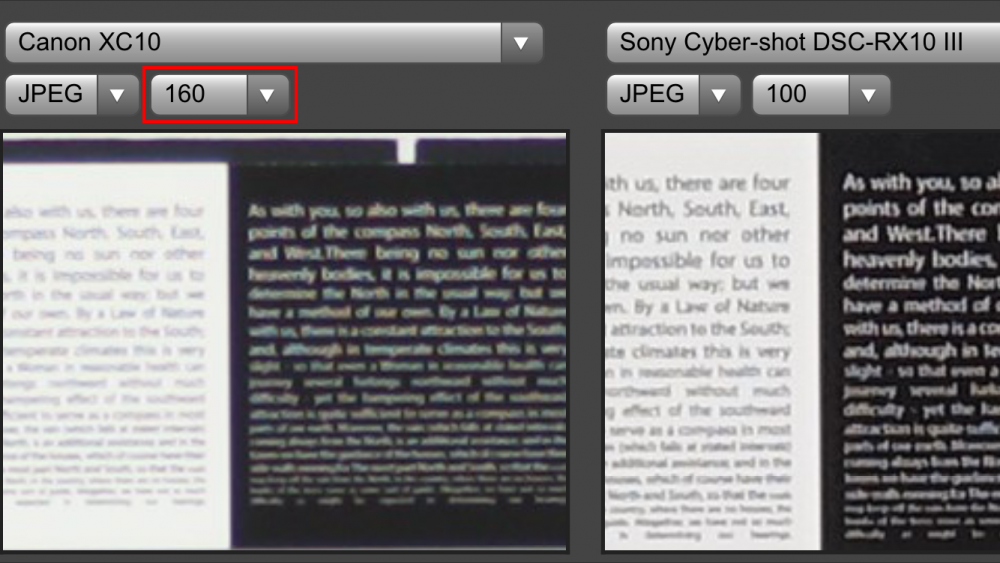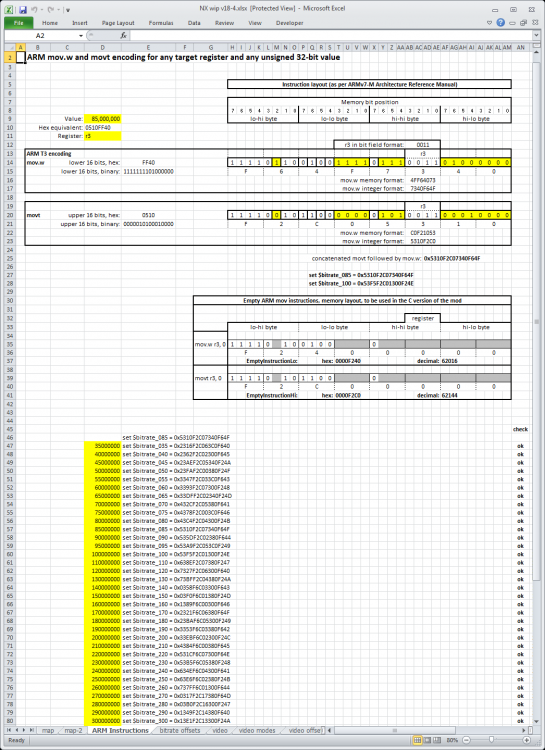Leaderboard
Popular Content
Showing content with the highest reputation on 06/05/2016 in all areas
-

Canon XC10 versus Sony RX10 III. The Canon is underrated!
markr041 and 4 others reacted to fuzzynormal for a topic
All cameras are good these days. If you're still a spec sheet nerd, good for you. The pros I know will use anything that ultimately does the job. Even cheap "plasticy" cameras with lower build quality. Hey, sometimes you don't need a camera to last 5-10 years. Honestly, with the way the market moves, why would you? The things are practically disposable now. 1" sensor? Big deal. Shallow DOF has become wildly overrated and overused. This camera was on my radar as I do a lot of doc work. I have no doubt it would look fine the way I shoot. Ultimately, I decided to go with the GX85 for numerous other reasons, (the fact that I have loads of M43 glass and I need two of 'em) The other main reason being that the GX85 looks like a simple stills camera and doesn't intimidate anyone or call attention to itself by looking like a professional piece of gear. That's a huge "feature" for what I need to do. That need I take very seriously. And in my mind it offers a HUGE advantage over "pro" gear. How would you put that on a spec sheet?? Quite simply, if the XC10 solves an important production problem, no doubt I'd buy it. Certainly others are doing so.5 points -
I am afraid, most of us here, has never had an XC10 in their hand. But we can still exchange views and ideas, that’s the forum about. I don’t buy a camera, like my wife chooses a car. -Look honey, I want this one, it has such a nice color :-) If a camera’s specifications are not good enough, why should I use time to test it??? For me the XC10 is a monster, clear mistake from product management. Not good for photography. No RAW. It could be a firmware update but Canon would for sure not do it. The lens is so-so Weak continuous shooting No IR flash-sync No autofocus lamp Few manual adjustments, everything is in menus No B shutter Not good enough for professional video work. The lens is so-so… There is a On/Off ND-filter, but no control over it. There is no powerzoom. No XLR Strange solution for viewfinder The bitrate (305 Mbs) is more a sign of bad codec Not interesting for the amateurs either. Too expensive, especially with the memory cards. Too much data to work with Probably very high loss of value. Too big and strange ergonomics Too weak for the competition :-) I doubt, the video file of the XC10 is better than the GH4 with the 14-140 kit lens, and the Panasonic is way better for photography. And, don't forget to check the price. That is my view on it :-)3 points
-
I had said this long ago, but I guess Panasonic has/ had its reasons. Panasonic needs a better codec to handle video. Like a 4-2-2 version of H.264. They should probably add 4-2-2 internal on the GH5 and get it to the $1999-2499 price. They could add some good preamps and better low light to justify the price increase. Also, they need Codecs of upto 200Mbps on all interchangeable lens cameras Including the GX85. And Log Profiles on All ILCs too. And try and explore accessories for the Hot Shoe Mount, like Sony's mic attachments on its A7 series. Also, Panasonic needs a Lot of f1.2 and f1.4 lenses, especially with Auto-Focus and Stabilization (including 24mm, 35mm, 50mm and 100mm Full Frame Equivalent). The f1.2 line could be Premium Lenses and have more stops of stabilization (like the Olympics 300mm f4). Also, I believe that the M4/3 sensor can Easily handle 27MP resolutions, if the 1 Inch sensors can do impressive 20MP resolutions. A lot of the M4/3 limitations are due to the fact that Panasonic outsources its sensors (and also doesn't specify it's requirements and only picks up sensors from the shelf). Either Panasonic starts telling Sony to get serious about the M4/3 lineup or find a new sensor maker or makes its own sensors. And obviously the fact that Panasonic wants to protect an Imaginary C100 kind of range that it has (DVX200?) May be one of the reasons it's not bringing a 4-2-2 codec on the GH5. I think a price increase could justify it. The GX85 is an excellent camera for the buck. It does resolve a Lot more detail than other 16mp Panasonic cameras and I suspect it is as much for the lack of shutter shock as it is for the lack of an anti-aliasing filter. Though only the Olympus and Leica Primes may help you notice the difference in resolution in large prints. The Panasonic Zooms (like all kit zooms) are average lenses, on which you won't be able to notice the difference.3 points
-
When this came out, I was disappointed by the screen doesn't articulate to the side...like many "camcorders". The ability to handhold/place in unique positions is hindered when you have to plant your head behind the camera. I get to some degree why they went Cfast with high bit rate/depth 4k at the time. But is the ability to record the HD to either card that difficult? Same with RAW stills. For the talk of it being a pro cam, the recruiting of Jackie Chan for the roll-out seemed muddled. The pre-NAB '16 suggestions from Canon that a big update was coming really seem disproportional to what they delivered. BTW, here you mention the Video assist as an XLR etc solution. As I posted in the GX80 thread, did you get a good one from the get go?(green hue, dropped frames) Some report the fan noise of the 4k assist to be of concern in close quarters. All that being said, I applaud you for having an open mind to revisit this cam beyond the specs. Maybe a further exploration of this cams baked footage and C-log after judicious post sharpening is in order.2 points
-

1DC vs 1DX II Shootout
Nikkor reacted to Andrew Reid for a topic
@jcs So this is your definition of Shakespeare is it? The boring pot woman is telling the story. Johnnie is just pointing his camera at her and editing out the 'ums and ahs'. She's not so much telling a story as reeling off a bunch of facts about her business. Just as a cafe owner would in an advert for his cafe. As far as the storytelling goes, it is 100% advert, 0% fiction. The great reality distortion field of the modern video industry is that the word "Filmmaker" and "Storyteller" are used with abandon, peppered around to garnish the not very appealing stake which never sizzles. Just a bunch of over-privilaged over-monied middle class egotists going about their self promotion ritual. It's not more worthy than one of us making a cinematography mood piece without any explicit story or characters. For me that is the superior art form and this pottery advert is just completely forgettable trash with a facade of high production values... Just because it's "Real-world" content, doesn't make it on-par with Kubrick's stuff you know?!1 point -
It depends on the RAW format and bitrate - but keep in mind the speed of the drive shouldn't affect the playback speed of a clip that has been altered with, because it's still playing back the same file. A good graphics card will help more. CPU doesn't do as much when it comes to price/performance. I would personally still recommend an SSD but not for storing footage, unless if its going to be its only purpose.1 point
-
It's funny I've had the opposite reaction towards this camera. Thought it was interesting on paper (4K, 422, decent codec & canon log under $2K had me sold) but in actual use it was a huge let down. Number one issue the lens and specifically the unusable focus ring. I see MF listed in the cons of the review but it can't be stressed enough how shitty it is. It seems Andrew may overcome this issue because he considers the AF to be ace but it isn't DPAF good either imo, and goofy MF is a deal breaker for me. I was also far from blown away by the IQ, but this type of lens just isn't my cup of tea I'm afraid..1 point
-

Cutting Diopters?
Bold reacted to Tito Ferradans for a topic
Phew, this one is wrapped. Using different methods, I managed to get a decent cut, and here's a detailed tutorial on how to do it yourself! http://www.tferradans.com/blog/?p=89221 point -

Canon XC10 versus Sony RX10 III. The Canon is underrated!
Miklos Nemeth reacted to Viet Bach Bui for a topic
But they are still more oriented towards stills. Same as A6300 and A7RII which can also do video very well. But whatever the RX10 is, it is not a professional camcorder, which both the XC10 and X70 are. Btw, the AX100/X70 also have 1'' sensors.1 point -

Petition for Samsung NX1 hack
Pavel D Prichystal reacted to lucabutera for a topic
Someone know if with hacks it possible to set manual focus in video mode, without setting it every times?1 point -

Canon XC10 versus Sony RX10 III. The Canon is underrated!
Miklos Nemeth reacted to Viet Bach Bui for a topic
Apples to oranges. The XC10 should be compared to the AX100 from Sony, not the RX10 II which is primarily a stills camera. EDIT: actually the Sony X70 is a better match since it's got the same MSRP as the XC10.1 point -

Canon XC10 versus Sony RX10 III. The Canon is underrated!
KrisAK reacted to Andrew Reid for a topic
You're right, the price is on the high side. But it is a professional camcorder, not a consumer one although it has cross-over appeal. The codec is a professional one, straight out of the C300 Mark II, the image processing is also professional grade, not the TV-consumer sort. In Berlin the full frame ISO 400K A7S II is over 3000 euros. The XC10 cost me half that, around 1700. So it's more in the NX1 / GH4 league of pricing than high-end full frame. The original A7S isn't 1700 for ready-to-shoot 4K, you have to add the cost of recorder and lenses on top. If you consider the XC10's 'body' as a 999 euros piece and the 24-240mm lens the extra 700 euros, that means the body is 2000 euros less than the price of an A7S II / A7R II and the lens is 200 euros less than the price of Sony's 10x zoom for full frame, the 24-240mm F3.5-6.3 (notice the slower aperture and much bulkier design compared to the XC10's lens). Indeed, a 1000 body and 700 lens is very similar to the Panasonic and Olympus pricing of higher-end Micro Four Thirds kit. The closest competitor is the GX80 + 14-140mm F3.5-5.6 Mega OIS. With that you will get similar standard of 5 axis stabilisation to the XC10 in 1080/60p, even slightly better stabilisation in 4K mode. However, the Panasonic lens doesn't have the 'cinema' feel of the XC10's lens, it isn't as sharp or as punchy. The camera doesn't have a LOG profile so you will be down 2-stops of dynamic range and the footage won't pull around in post as much. And good though the GX80 is, I prefer it with faster glass, not the 10x zoom and ergonomically I prefer the loupe-EVF of the XC10 to the small built in EVF of the GX80 or GH4. I've already mentioned the colour and bitrate differences too. So ok, we can look at the specs all day long, we can all go hands-on for a few seconds in the shop on any camera we like before buying it, but the real proof of the pudding is when you're a week into using it, you've optimised how you use a particular camera to iron out the quirks, you're in the heat of the moment getting the shots you need, this is where the XC10's hidden strengths (which the specs only hint at) begin to come apparent.1 point -

Canon XC10 versus Sony RX10 III. The Canon is underrated!
Miklos Nemeth reacted to Andrew Reid for a topic
You can add XLR support to any camera with an HDMI output. The Blackmagic View Assist 4K for example has two mini XLRs on it, plus it will be in sync with your recording unlike a separate dual-system audio recorder. So don't use it for low light applications then! Right tool for the job and all that. Anyway it's actually perfectly usable at ISO 6400 in 1080p with Canon LOG or up to 1600 in 4K. Remember a lot of the time you don't need higher than 3200 or 6400 in low light. Another case of where just looking at the specs doesn't tell the whole story. It's the 1" sensor that makes the lens possible at all, in such small packaging. 24-240mm with 5 axis stabilisation is not to be sniffed at. It's a lot sharper than the 14-140mm Lumix you can put on the GX80 and the codec is better - much higher bitrate and 422 colour. Personally I like the GX80 when it is with super fast glass so I wouldn't both using it as an XC10 replacement. They're complimentary. GX80 for interchangeable lenses and XC10 as a Super 16mm style shot-getter. OK I get that there are many people who don't want to own more than one camera, so the one camera they do buy must do EVERYTHING. Well there is no such camera. I would not advocate replacing a A6300 and A7S II with the XC10 without knowing how it was going to be used by the shooter in question. I can only put the facts out there. The XC10 can do a lot the Sonys cannot: - It doesn't overheat during a shoot (A6300 is not suitable as your only camera for anything to be honest) - It doesn't require any investment in lenses. A6300 may not be $2000 but add up the cost of the lenses! - Sony's colour does not have what it takes - A7S II and especially A6300 rolling shutter is much worse than the XC10 - A7S II's AF in video mode is rubbish - Ergonomics on the Sony bodies are charmless - Battery life is rubbish as well So just have in mind what the strengths and weaknesses are before you write off the XC10 just because it doesn't have a full frame sensor or ISO 408,0001 point -
Canon XC10 versus Sony RX10 III. The Canon is underrated!
kidzrevil reacted to gelaxstudio for a topic
uh...TheCameraStoreTV gave it the award as the worst video camera of 2015 and the lens was awarded one of the top three worst lenses of 2015 ! https://youtu.be/Mexs7HvHR2I?t=13161 point -

Canon XC10 versus Sony RX10 III. The Canon is underrated!
kidzrevil reacted to Andrew Reid for a topic
The ones who are confused clearly were like me when I didn't own an XC10, just looking at the specs and even the JPEG resolution (for reasons only they can know!) and thinking that it is an expensive, odd product, lagging behind Sony in the specs race. Try one, get to know it, look at the images, you will be surprised like I was what a lot of fun it is and how great the images can be. I'll upload some footage, still shooting with it. Better all-round cameras? Maybe, but what if you want 422 internal 305Mbit 4K and 24-240mm zoom though?! Not much to compete with that in one-body for under $2k, especially not with the colour and ergonomics of the Canon.1 point -
Wholly color gamut Batman! Whenever someone complains about 8 bit color, point them to 01:45-02:40 of this video. Only Canon can make 8 bit color look more rich and accurate than 12 bit color from competing cameras. Bravo to the filmmaker as well as the engineers behind this camera.1 point
-
Sorry for the lack of tact. I was heavy on the rhetoric. Good on you for calling me out on it. To be fair, I've done exactly the same thing in the past to feel out new gear, and made a bit of a mess of it. https://vimeo.com/122338262 password="password" But, I did mention "user error" because I do think it's important that folks understand viewers may be seeing that rather than limitations of the camera. On the other hand, I do agree it's great to shoot wild with something and see what happens. Sometimes, as an online viewer, it's difficult to discern if it's the gear making mistakes or the shooter. Sometimes it's both. Anyway, it's not a knock against anyone's craft and ability, just a reminder to understand that what you see online is not always what you get.1 point
-
Here's some quick footage. I like the stabilizer. Pretty harsh Mathew. We're here to help and share with each other and maybe not to bash. Just grabbed my one-day-old camera on my way to the Bug Fair to mess around and thought I'd share. Hope it was helpful to some to point out some of it's strengths and limitations. Took a look at some your International doc work - nice.1 point
-
Petition for Samsung NX1 hack
MountneerMan reacted to chauncy for a topic
can't remember seeing it... did any hack fix the damn video evf monitor bug. The one where if you start recording video and if use the camera monitor you can't switch to evf and vice versa.1 point -

Canon 1dx Mark II - Underwater Footage
Oceanshutter reacted to jcs for a topic
Excellent shots, especially the extreme close ups!1 point -
Canon XC10 versus Sony RX10 III. The Canon is underrated!
Miklos Nemeth reacted to Prandi for a topic
I earn my money among others with the XC10 and I enjoy it. crazy the a say with a nikon j5 here oh god. 1. Price XC10: ~ $ 1,700 2. Price CFast card: Transcend 64Gb 2.0 ... 59 $ 128Gb ... 100 $ 3. XLR? ... A small adapter .... $ 40 4. ND .... she has a. and when I say "very good" photos need, I'll do it with a Canon 5D III and not with an A6300, RX10 III The XC10 is a Video camera with photo function ... and a RX10 III, A6300, a photo camera with Video function. Here to talk some with which they had never been in his hand, let have ever worked with her. sorry, but is always the same....Canon basher or which they have previously seen photo on only one. Sorry for the google translation.1 point -

Canon XC10 versus Sony RX10 III. The Canon is underrated!
gelaxstudio reacted to Mikestern for a topic
Andrew. When I read that part about the image quality comparison of these 2 cameras, I was surprised. So I went to DPreview and put the images side by side to check. ??? xc10 image quality is no where close to RX10III. Honestly. It doesn't even offer RAW. You mentioned this under "cons" for Canon, but why not mentioning the same thing under "pros" for Sony? Canon does not have to have a better image quality, I understand, but near 2000$ camera that doesn't offer RAW for this category of a camera is not easily acceptable, not only for me, for so many of us. i really would like to believe you conducting this article unbiased. Having difficulties.1 point -
Ok this is going to be fun. BTW in case you wonder why I have time and state of mind to write this long post, see here :-(. So all you have so far is two contradicting claims coming from me and KS, and you cannot be sure which of us is right. Let us rectify that. I attach the spreadsheet I used to calculate the bitrate values - you will need to keep it open in Excel because otherwise you will not be able to properly follow the rest of my post. NB. you will need Excel 2013 or later because it uses some Excel functions that were unavailable before Excel 2013. I also attach a print screen for those of you who would rather not download it and instead look at a picture :-), or do not have Excel 2013. Unfortunately the machine I am writing this from does not have Excel 2013 either so I cannot plug in the 40Mbit value - but you will see that the spreadsheet calculation gives the exact value I used and KS quoted - see cell E48 (If you want, tonight I will post an updated picture). BTW if you have not heard of hexadecimal (base 16) numbering which is used in computing because it is easier :-) just remember that instead of numbers containing 0-9 you will see in the spreadsheet many numbers using 0-9 and A-F (coz base 16). If you are unfamiliar with this, do not be discouraged - I will not ask you to make any calculations. So, if you are ready to invest 10 minutes in understanding where do the rates come from, here we go: When I looked into the newly broken-in NX500 it was obvious that the di-camera-app was the program to look into - the name makes it so. So my initial objective was to see where the bitrates are set - well, to cut a long story short, I identified the place in a certain function call, and I saw that the bitrates were loaded into a CPU register via a couple of ARM instructions (different for each bitrate slot). These instructions are called mov.w and movt. The end result of running them one after the other is that a 32-bit value is loaded into a target CPU register. For the bitrates, the target register needs to be R3 (except for nx500 pro bitrates which need to be put in R0 - note that KS did not say what is the cause of this exception). Now we go in really deep. Basically we need to re-encode these instructions such that instead of loading into R3 whatever bit rates Samsung marketing decided, they should load whatever __I__ wanted. From now on I will start each paragraph with the cell you need to look at. Cell D9 - So let us pick the target value - in this case 85Mbps. Cell D10 - to keep things easy let us convert it in a 32-bit hexadecimal Cell D11 - let us not forget the target register (for nx500 pro bitrates we would change this to r0) Cell H5 After thoroughly reading the relevant section of the ARMv7 reference manual, I built the tables H5-AM9 and B13-AM23. Let us discuss then a bit. The two ARM instructions I am trying to assemble are each 4 bytes = 32 bits. Since this is little-endian ARM, the values are stored in memory as shown in table H5-AM9. that is, a bit scrambled :-). If you read the ARM reference manual, you will see that these two instructions are very similar, the only difference is that one loads a 16-bit value in the lower half of the target register (mow.w) and the other of into the upper half of the target register (movt). They are encoded with some fixed bits (background white in the tables) and some variable bits which contain the 16 bits that make up the value to be uploaded into the register (yellow background). So now all we have to do is split the 32 bits of the target value into two sets of 16 bits, and spread these 16 bits into the dedicated yellow spaces reserved for them. Cell B13 Let us start with mov.w (cell B13). The mov.w neds to contain the lower 16 bits of the target value - see cells E14 and E15. These 16 bits I then manually (ok through formulae) sprinkle into the proper yellow places in the encoded ARM instruction. I then do the same for the movt instruction. The upper 16 bits from the target bitrate I "sprinkle" into the necessary places within the encoded instruction - see cells B19-AM23. So now we have the ARM instructions codes, exactly how they look if we dump the memory: see cells AB16 and AB22. BUT, since I am going to use gdb to patch the memory, they are inconvenient, because gdb would require four set statements if I tried to patch byte by byte the memory. So what I decided was to make out of these 4 bytes an integer (which can be patched with one gdb set statement). How to do it? Well, because ARM is little-endian, I needed to reverse the memory byte order to arrive to an integer that gdb will use for patching. Hence cells AB17 and AB23 - notice that the bytes are in reverse order compared to what you see in the memory. This is because gdb, when putting an integer into memory, will know ARM stores them in reverse order and therefore will do the same. The net result is that we end up with the proper value in the memory. Finally, again to make my gdb task easier, I decided to concatenate these two ARM instructions together so I do not mismatch them and because they are easily split again in gdb. I did that in cell AD25. So now all we need is to add the surrounding text to make it simply a copy/paste in the gdb script and thus avoid re-typing errors. This I did in cell Q27. But this calculates only ONE bitrate value, and I am lazy so how can I force Excel to calculate all of them without me having to replace each value in cell D9? Well, Microsoft was kind enough to provide for array operations (I think they are called so) and I took advantage by telling Excel to basically replace D9, successively, with the values I wanted, and store the result in a table. You will find the table in cells D46 to G82. From there I simply copied the result into the gdb script I publicly released. Now if you have gdb, go to the memory addresses that change the bitrates and compare my spreadsheet results with the original SAMSUNG values, you will see that they match perfectly: the instructions generated by my spreadsheet are CORRECT - every instance of original Samsung bitrate set instructions, read from memory, matches the corresponding value calculated by my spreadsheet. This proves that the elaborate construction I put together in this spreadsheet is correct. Finally, for those who open the file, there's a second section of the worksheet that I did not discuss, and which is basically the development of the algorithm used by my current nx-patch and which calculates on the fly the bitrate allowing you to set it to whatever value you want. This development I integrated ad-literam in my nx-patch - see bitRateOpCodes function in nx-patch.cpp. NB. This is a very very short explanation of my thought process how I went from zero ARM assembly knowledge to encoding these instructions, by using the ARM reference manual. I hope this post will clear any lingering doubts about the correctness of my calculations. NX wip v18.xlsx1 point
-

Inspiration
Xavier Plagaro Mussard reacted to M Carter for a topic
You're approaching this the wrong way. It doesn't matter what product or what media. The question is, "what are you really selling?". BMW doesn't sell cars - they sell status and they sell based on the consumer belief that owning a BMW will make everyone think they're wealthy, classy, demanding only the best, and so on. Tires are a practical item that most everyone needs, or they're a desirable performance item for a niche market. They're expensive ($700 next week for my vehicle, damn it!) and a hassle to purchase and take care of. They're something you forget how much you rely on until you have a problem with them. They can be the difference between life and death. The fact you've said nothing about the business - what's their market position, who is their market, why should a consumer choose them over the competition - makes me think you're approaching this as a creative project and not a marketing project. That's great, but you need to deliver a product that meets the business goals of the owner. Do they want attention, do they want to seem cooler, do they want their market to realize something about them that isn't apparent (better price, good service, fastest installation)? A tire shop ad can range from the owner in his terrible suit shouting "CHEAPEST TIRES IN TOWN" with bad interlaced footage of the shop, up to the very best commercials from Michelin or Pirelli and so on. But this guy is a dealer, not a manufacturer - straight-out marketing suggests you get across the reasons a consumer should consider them over their car dealer or a big chain store (could be done with humor or action or any of a dozen directions). I'd resist the knee-jerk reaction to sell tires - Michelin sells tires - what does a local business actually sell to their market? A market that's about to purchase tires and deciding where to go for pricing and service? This can still be creative as hell, it can be viral, etc. But you probably don't need to sell the product itself. Remember the ad for some local gym? A buff girl is walking around in her panties and approaches a bowl of nuts. She sticks a nut between her butt cheeks and we hear a CRACK - the's so tough, she can shell nuts with her ass. The camera pans to her gym bag, which has the logo of the gym on it. Not a single word spoken. That's pretty damn creative, legitimately funny (and went viral and was shared, like, 10 million times). They didn't talk about their pricing or classes or schedule or locations, but got massive attention. One actress in one location, too. Step back and think about the market and what the business wants to achieve.1 point -
I've never posted on this forum before but I read it quite often, and I thought I should finally contribute since I have actual useful content this time that nobody's actually definitively confirmed. I have the Panasonic GX85, the US version. I have it in my hands and it's a beauty. But let's just get straight to the point. 1. In AVCHD and in 4K, there is no 29 minute recording time limit. There still is a weird 29 minute (and 4GB) limit for FHD/HD/VGA MP4 clips, but none for AVCHD and 4K MP4. Part of me didn't actually believe it, so I took a fresh battery, a fresh 64 GB card, put the camera into 4K video mode, IBIS on, and just hit record. 1 hr 29 min 9 sec later, the card filled up, and the camera stopped recording, but the battery still had one bar left, and the camera never quit recording on me. It was warm, but not hot to the touch. It was indoors and at night, however, but I'm just telling you, recording long clips is well within the realms of possibility with this camera. I'm actually quite excited about being able to record indefinitely in AVCHD as well. When I'm recording a long event, it's not that important to get the best quality, but it's important to be able to get SOMETHING. I can run this camera up on a tripod, set it to AFC mode at 1080/30p 24Mbps AVCHD, hit record, and come back some time later and know that it got SOMETHING for last hour and a half. AVCHD can be annoying to work with, but a lot of consumer-level camcorders still use the format, so in effect, I'm getting a very capable large sensor camcorder to go along with my high-end 4K shooter. No complaints at all. 2. And that's not all, folks. I've had a GH4 and one of my least favorite things about filming 4K in the GH4 (and GX8 and G7) is that stupid 4 GB file size limit thing. So when you're shooting 4K, every six and a half minutes, there's a new 4GB file. But that's history now. On the GX85, if you use an SDXC card (basically anything bigger than 32 GB), the camera will give you one single monolithic file. I record a lot of musical performances, so long takes are kind of standard in my regular usage. I am not joking when I say that my editing process for 4K just became 40% happier. According to the manual, a file will split if "the continuous recording time exceeds 3 hours and 4 minutes or if the file exceeds 96 GB." Since the battery can't even last that long, for all intents and purposes, GX85 will give you single takes in single files. I expected the IBIS and the 4K and the beautiful design and all the other stuff. But I honestly didn't expect these two features. I really thought they were going to burden us with a stupid 29 minute limit in all settings (I assumed that and ranted about in other forums, I feel dumb now, oops) and never in my wildest dreams did I actually think they'd solve the 4GB issue with this camera, but they did. It's safe to say, this is the best MFT mirrorless shooter right now. GH4, you had a good run, but GX85 is the king. This is a true hybrid shooter. And at about half the price as a GH4 when you consider the cute pancake zoom has decent resale value. As an aside, GX8 buyers have got to feel a little burned by the GX85. I'm sure a lot of them would love large file support and 5-axis IBIS.1 point
-
Because organic flaws such as imperfect focus pulls have character. Seriously. At least in my head. I don't know if you've ever composed and arranged music on a computer, but if you rely on precision and algorithms to lock in rhythm, it ends up sounding rather soul less. Imaging can be similar: too clean and clinical. But, I understand CAF is a useful tool. it has been refined for dedicated motion picture cameras. I've seen it in action and was impressed, but I personally wouldn't use it for my stuff. Also, expecting smooth motion-picture-efficient CAF in a $700 photography camera (this year) is overly optimistic.1 point










